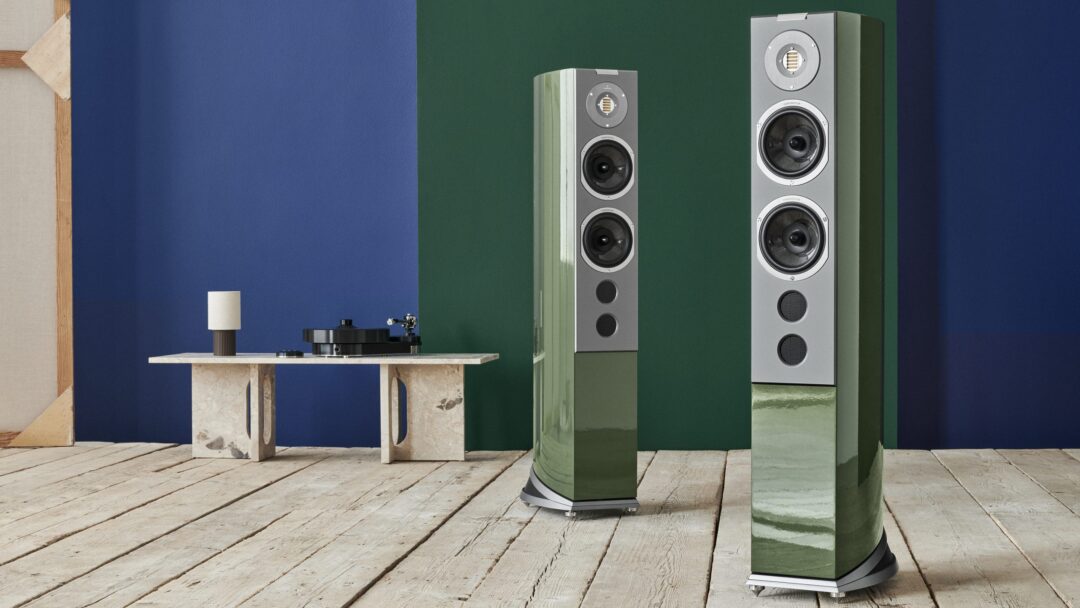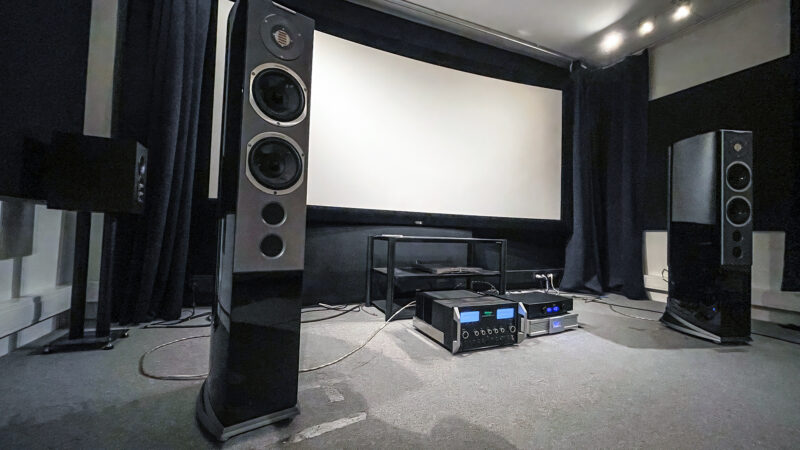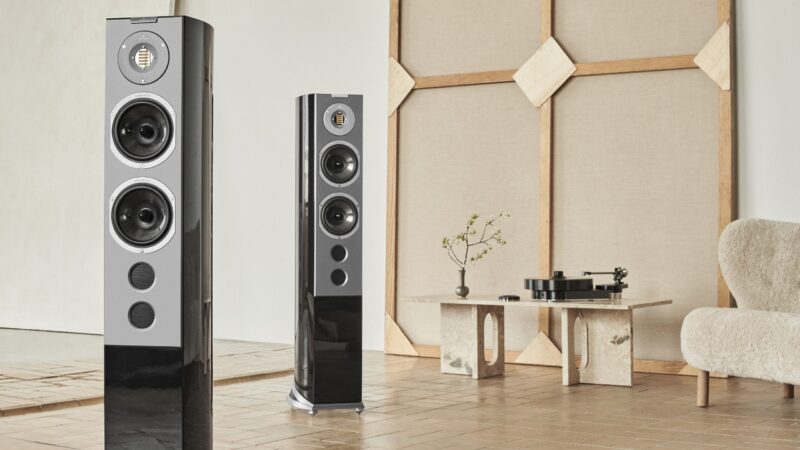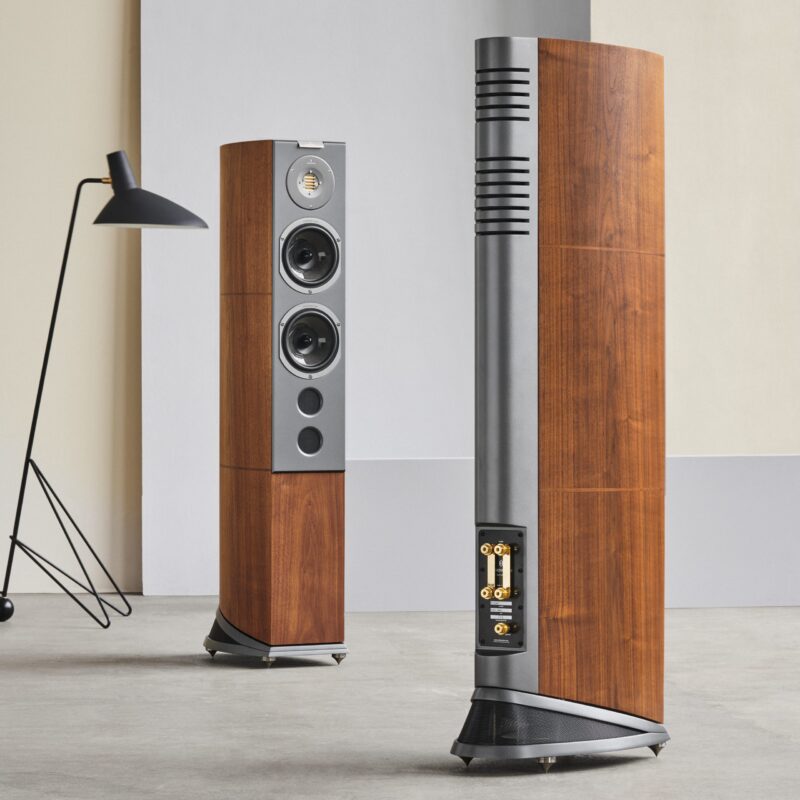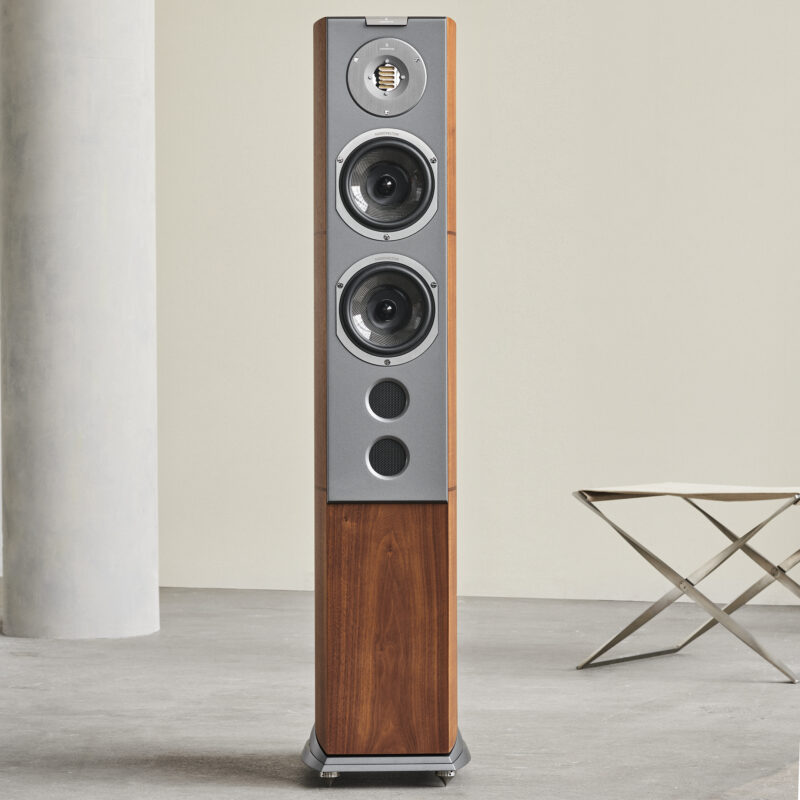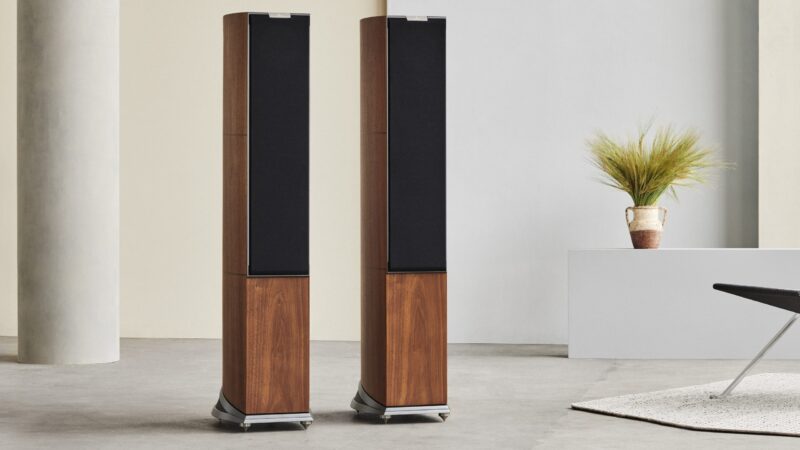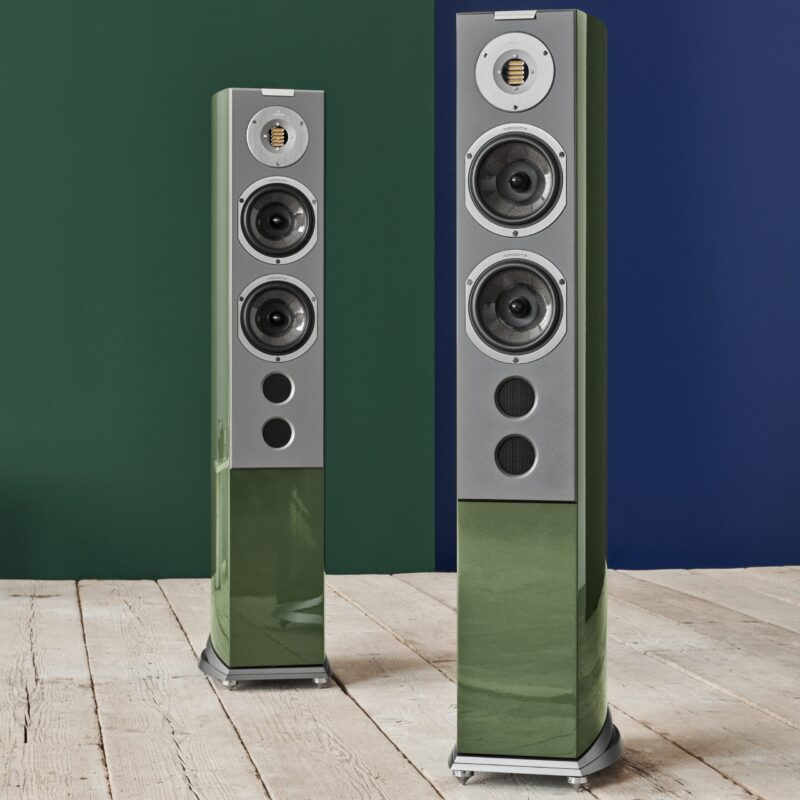Among all the speakers Gråbein has tested, if you asked which one he would like to buy himself, Audiovector SR6 Avantgarde Arreté V2.0 would be high on the list. Nevertheless, the choice would probably eventually end up on the newer and smaller R3 Arreté, which at half the price is more achievable, and which also has a more balanced bass and an even more solid sound image. The speakers are just not as powerful, or go as deep in the bass, as their now defunct big brothers.
But, of course, if you have a very large room to fill with sound, or you are looking for a giant wall of sound that requires something larger than R3 Arreté, then more powerful measures are needed. That’s why Audiovector has once again pickd up their tape measures, spreadsheets, Ohm’s law and Maxwell’s equations, to create even more magic than ever out of the 6-model.
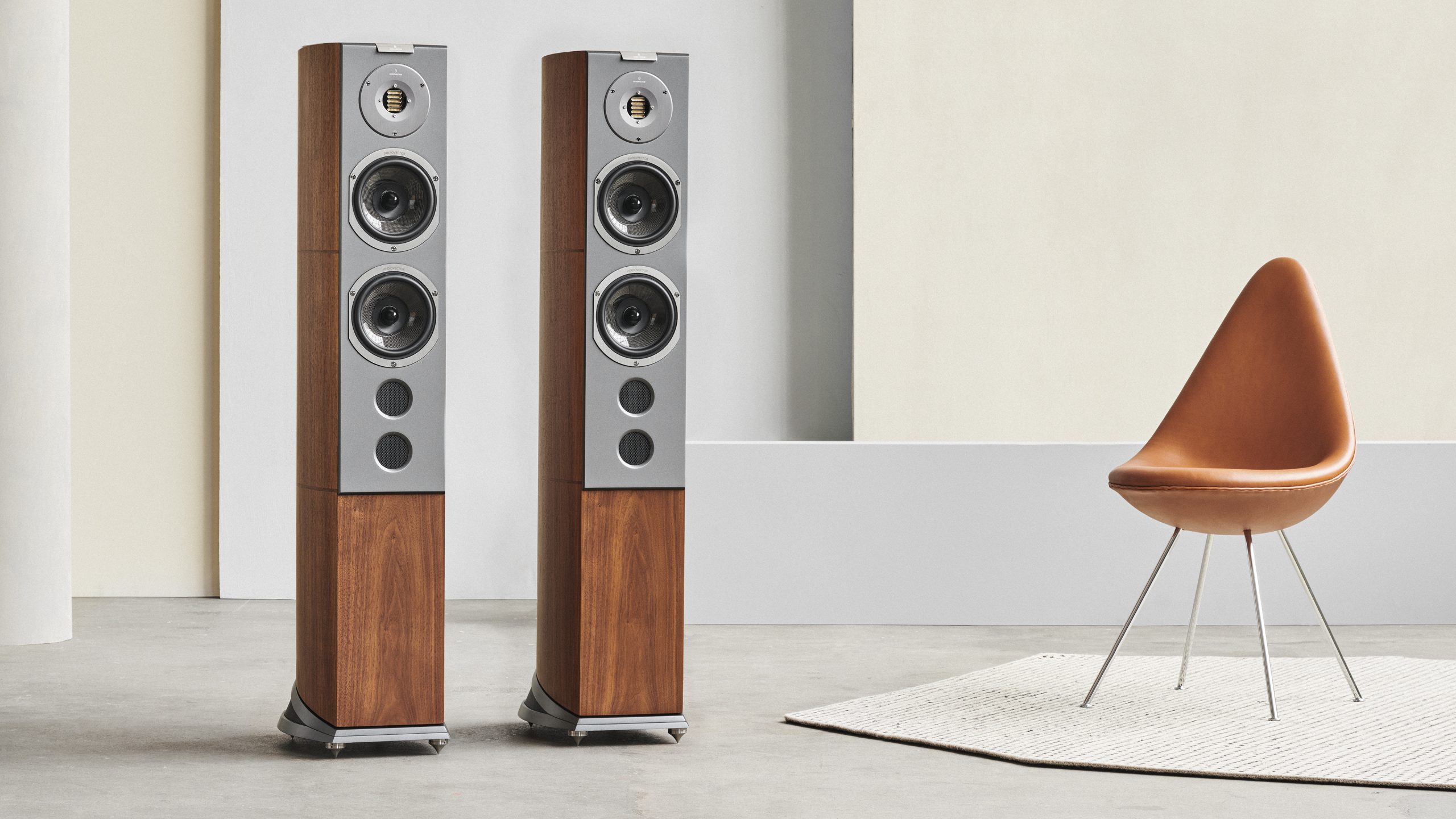
But there is a significant difference between R6 Arreté and SR6 Avantgarde Arreté. For where SR6 was an upscaled version of the cheaper SR3, one should instead look at R6 as a scaled-down version of the flagships R8 and R11. Both with Arreté as nickname, mind you. This is an important detail, which means that even greater resources have been spent on perfecting the R6 Arreté down to the smallest detail. It also makes the speaker a good deal more expensive than its already expensive predecessors.
“We use our SEC and LCC technology here too, but also our Freedom concept, which we introduced on the R8, and which is available on the smaller R3 and R1 Arreté,” says Ole Klifoth, founder of Audiovector.
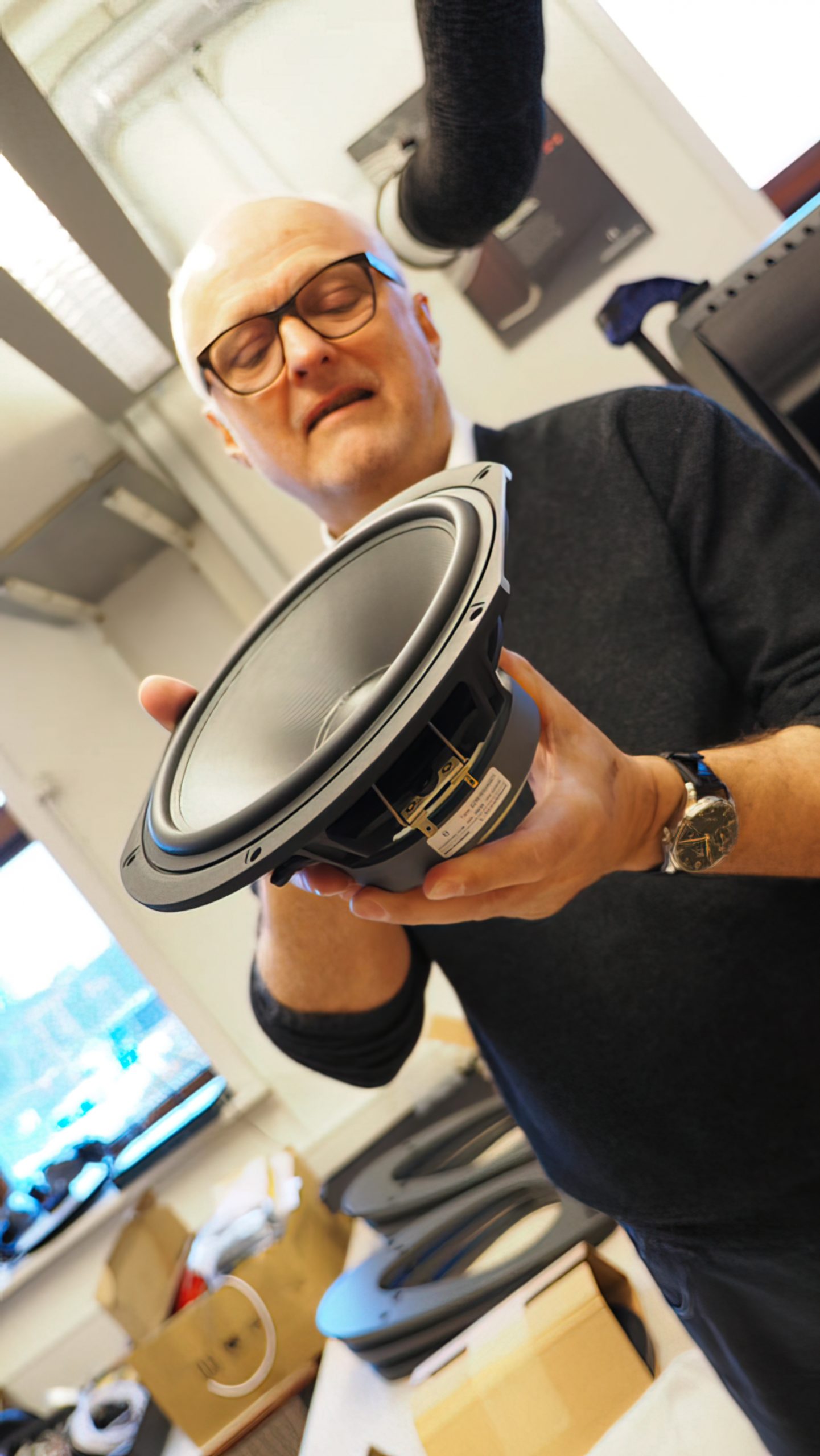
High density cabinets
The successor to the SR 6 is the fifth generation in the series, and although the cabinet shape is similar to the outgoing model, the design of the new HDF cabinet has been further improved.
“After R3 and R8, we thought that we had enough new knowledge to improve the 6-series as well, and it is clear that the R6 series has come a bit further technically, but also acoustically, we hope at least.”
The cabinets are made in China, but the speakers are assembled at Audiovector in Denmark, with drivers made to specifications from Audiovector, supplied by ScanSpeak and Elac.
The narrow front baffle and the curved sides with the sloping bottom plate, provide less diffraction, dampen standing waves better – and Audiovector therefore does not need to use a lot of inhibiting damping on the inside. It holds with some (Nano Pore) mats on the inside.
Audiovector calls it LCC (Low Compression Concept), where the idea is that minimal internal damping material does not put a damper (sic) on the sound coming from the speakers.
“The idea of LCC is to make sure that there are no restrictions that inhibit the sound in reaching the listener. Together with our SEC (Soundstage Enhancement Concept), we try to open up the sound image that we believe gets more depth, and which also creates low-, or rather, no-compression in the treble.”
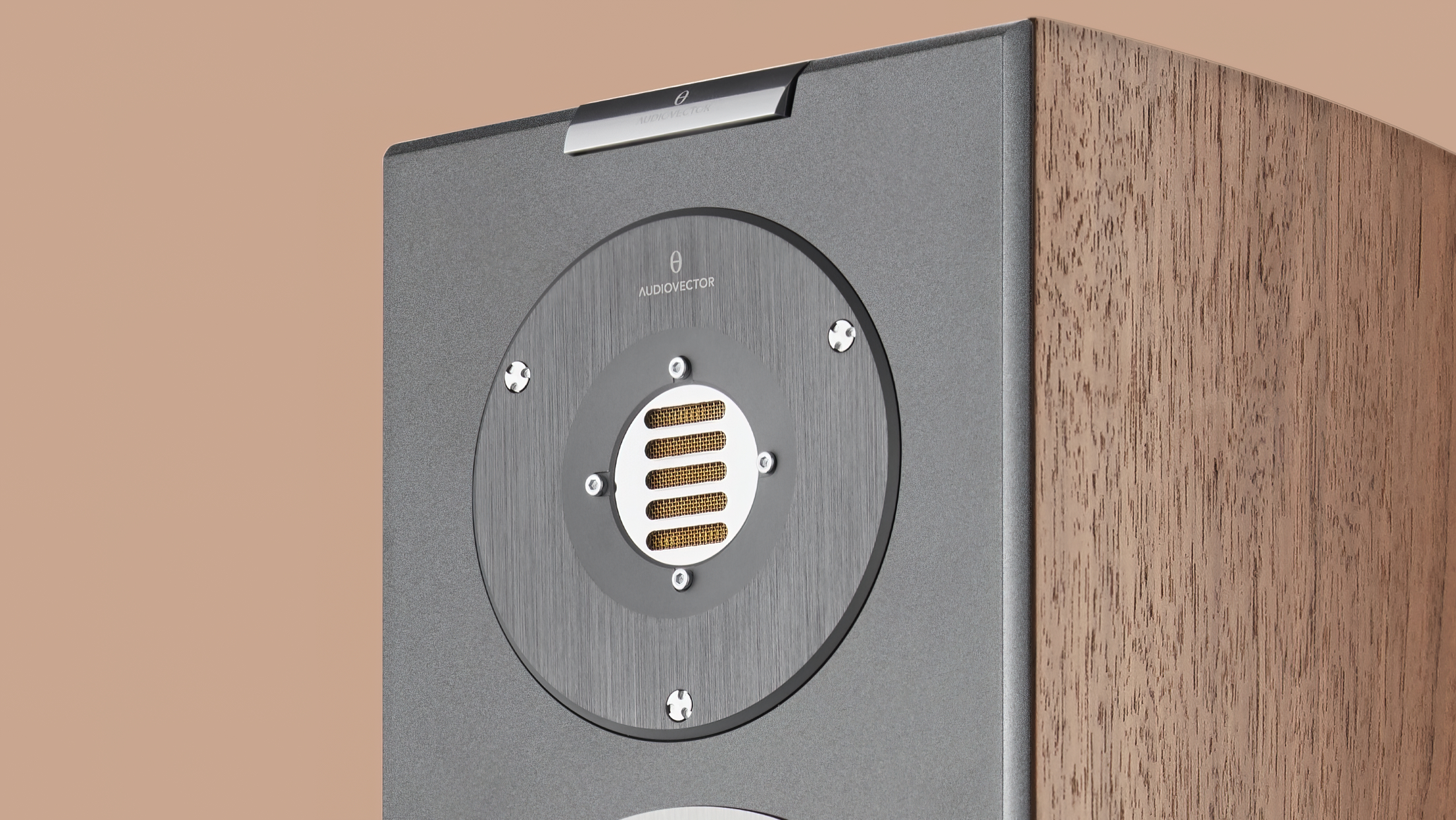
Special tweeter
The Air Motion Transformer, has an ultra-thin diapgrahm with a large functional surface, but folded just like an accordion. This is to get a larger effective area with a smaller footprint. On the R6 Arreté, the tweeter is specially adapted to the speaker, and modified compared to the AMT treble in the R3 Arreté and R6 Avantgarde. It has an open pole piece at the back and sits in an insulated chamber that is open at the back to eliminate compression, and it can extend to 52 kHz.
The two woofers with carbon fiber membranes on the front are divided in different places in the frequency range, and the upper one acts as a midrange between 350 and 3000 Hz, while the lower one covers the range between 100 and 350 Hz.
Below 100 Hz, two invisible woofers take over. In what is also called an isobaric principle, there are two dedicated subwoofers facing down inside, which play vertically out of an opening in the bottom plate.
But that’s not all. At the back, in a separate chamber, is a 7.5 cm midrange, which can be seen under the slits in the middle of the vertical HDF reinforcement at the back. It is also available on the R8 Arreté, and provides a larger sound image with more depth.
Which was very audible when we got the opportunity to compare with the R6 Signature and Avantgarde, which otherwise share the same basic construction, but do not use the same elements and the rear-facing midrange.
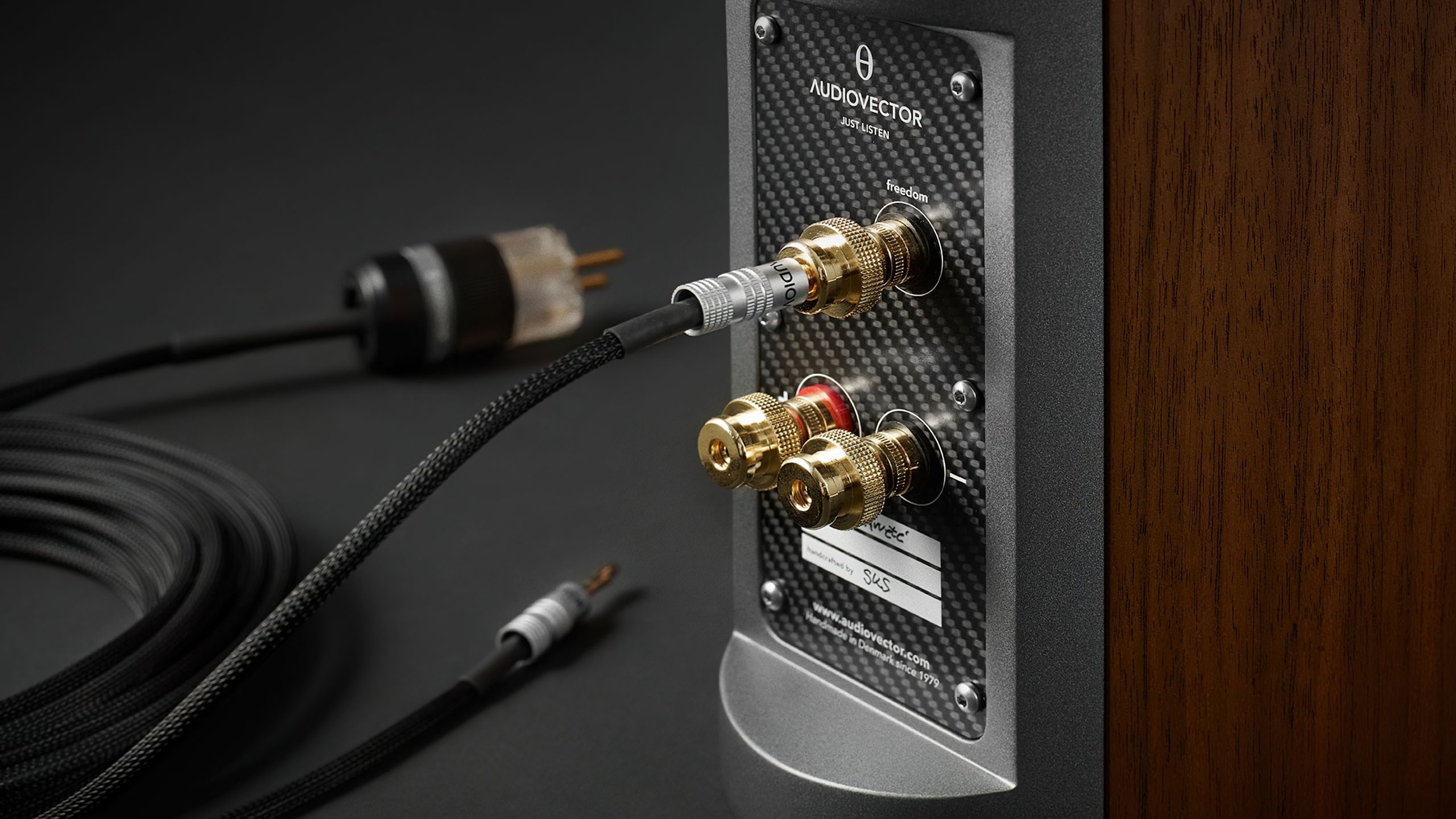
Freedom
Nor do they have the Arreté model grounding concept called Freedom. Which ground the midrange and bass elements with a separate cable, to attenuate feedback that can lead to distortion. It also requires a special crossover filter that is unique to Arreté, mounted with damping in between, on a carbon fiber plate.
Audiovector believes that Freedom removes as much as 50% of the distortion.
The components in the crossover filter are cryogenically treated down to – 238˚ C, which Audiovector believes provides better detail in the sound image. The resistance loss in the crossover filter must be reduced by 50%, and Audiovector says in the White Paper document on R6 that it also improves the transient response.
Lossless dynamics, zero compression, and high efficiency are some of the key words here. The R6 Arreté is also quite efficient, with 91.5 dB sensitivity measured at 2.83 V (1 W) and 1 meter.
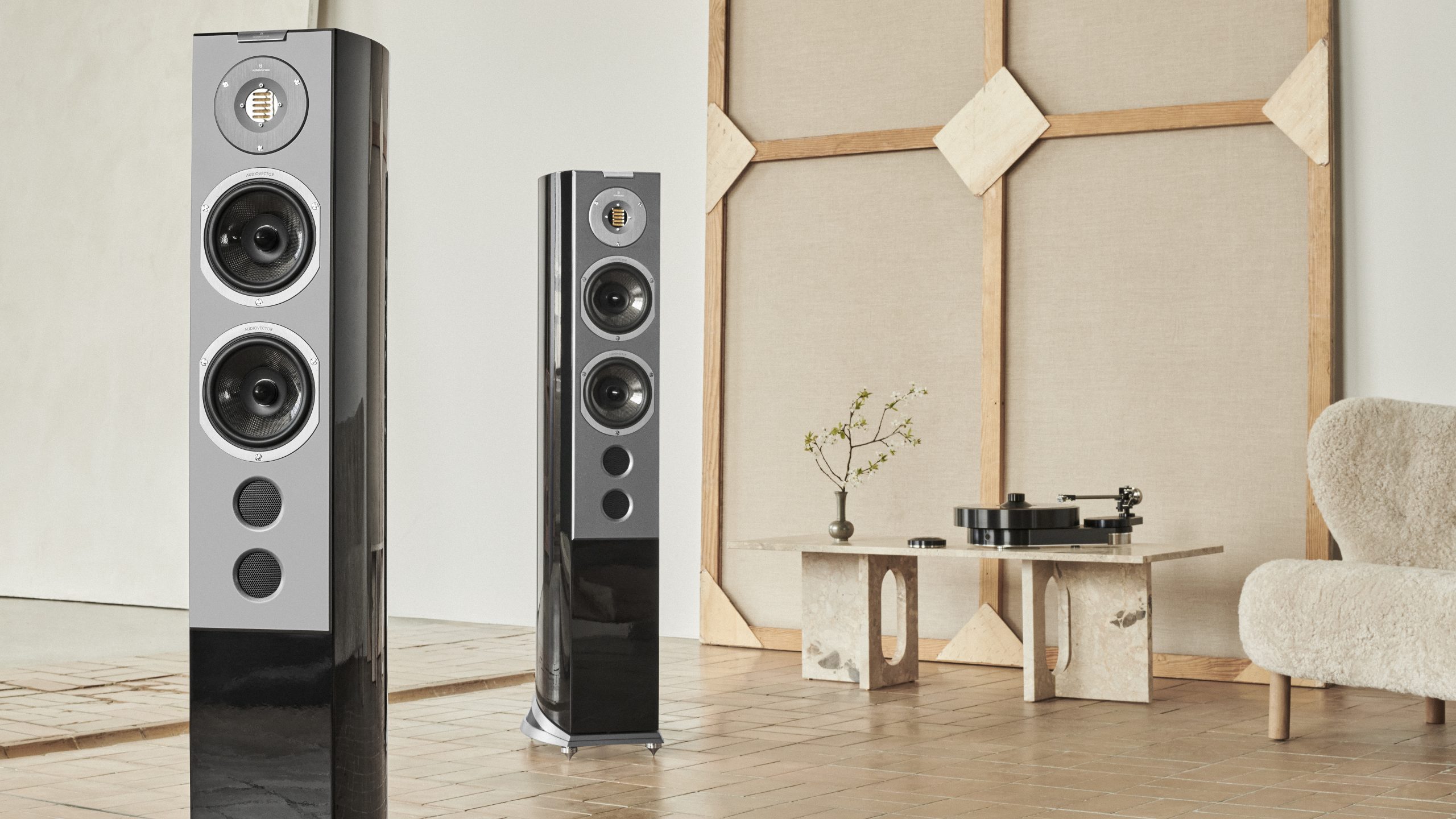
Fantastic from the first moment
It is not often, especially not with high-end speakers, that it sounds fantastic from the first moment the speakers are set up, with a distance to the back wall selected on pure intuition, and connected to an arbitrary amplifier. But that is exactly what is happening.
Though, quite arbitrarily, it can not be called, our faithful, stout stallion of a McIntosh MA7000, with Hegel HD30 responsible for the digital conversion. But it is by no means a matter of course that this particular amplifier should be a good match with a pair of speakers that are made to get the most out of speed and resolution in the entire tone register. Speaking of sound balance, the MA7000 is of the warmer type, and a bit dull in the top register. And there are definitely amplifiers with faster transient response. But, goodness, for a likable and rosy sound!
R6 Arreté discover every quality in the “Big Mac”. Rarely does it shine with a larger, more convincing soundscape in our 30 sqm listening room. And that bass! The combination of the speakers’ lightning-fast woofers and the amplifier’s voluminous playing style makes the rhythms in Billie Eilish’ I Didn’t Change My Number hammer into the belly region where you sit on the sofa and just wait for the next bass drum beat. While Billie’s low-pitched voice, right next to the microphone, is presented in a “larger than life” way, where it fills the room.
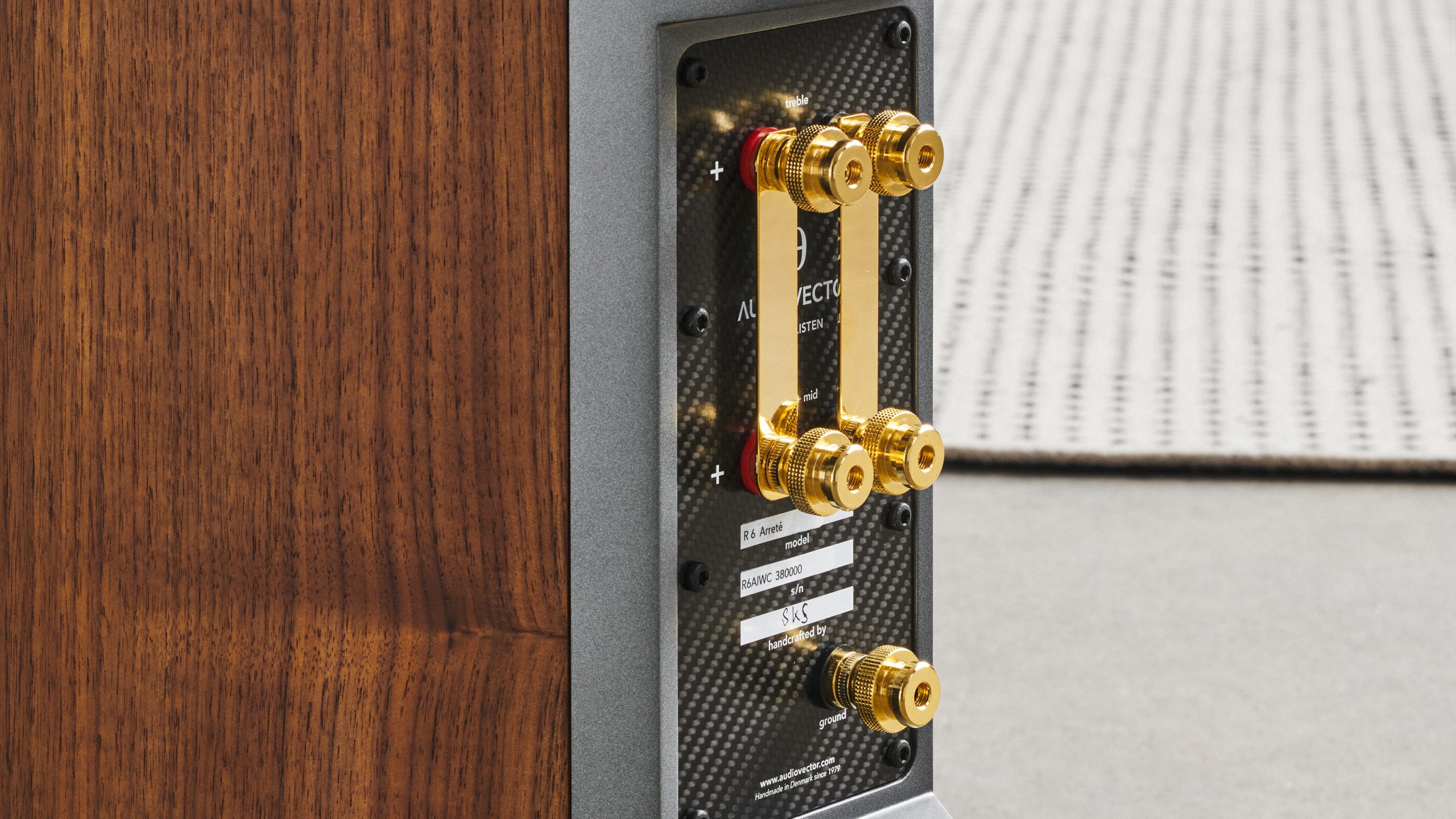
Ground Control
What then, when we connect the Freedom cable, which connects the speakers to ground?
We remember from R3 Arreté, that the sound image became more punctual in the centre, while instruments on the sides were also more clearly placed. And that’s exactly what’s going on here, too. It’s not very dramatic, and at first we wondered if this was due to placebo effect. But it is becoming increasingly clear that there is something here. As occasional users of low-strength reading glasses, we can compare it to walking without glasses for a long time, and thinking that everything is as it should be, and then suddenly putting on the glasses and feeling that everything falls into place better. Just that here we are talking about “spectacles for the ears”.
The Devialet is in the detail
Although the MA7000 amplifier gave a real wow experience, it is still not the one we would without reservation recommend to the R6 Arreté. We want to attribute that role to a completely different amplifier.
Because where the McIntosh paints with a slightly wide brush with more than a hint of red, the Devialet Expert 250 Pro is a precision tool.
Connected to the network and with Roon on the MacBook Pro as the audio source, the Devialet amplifier removes all small debris in the audio image, which grows larger in all directions. The bass is super direct, with a lightning-fast stop and start, and it also goes deeper. The downside, if you can call it that, is that McIntosh’s romantic color palette has been replaced with a surgically neutral one. One that does not mask the truth in any way. The amplifier distinguishes far better a soprano snare drum from a piccolo snare, and a violin from a viola. The speakers let themselves be lead with a firm hand, and they grow so enormously with the task, that you have to hear it to believe it.
And if you are wondering what makes a Bösendorfer grand piano different from others, it is due to extra bass keys below the normal tone range. Even when not playing, they help to give an extra rich sound to the rest of the piano, something the Devialet amplifier together with the Audiovector speakers mercilessly knocks into the listener’s diaphragm. As on Tori Amos’ Mohammad My Friend.
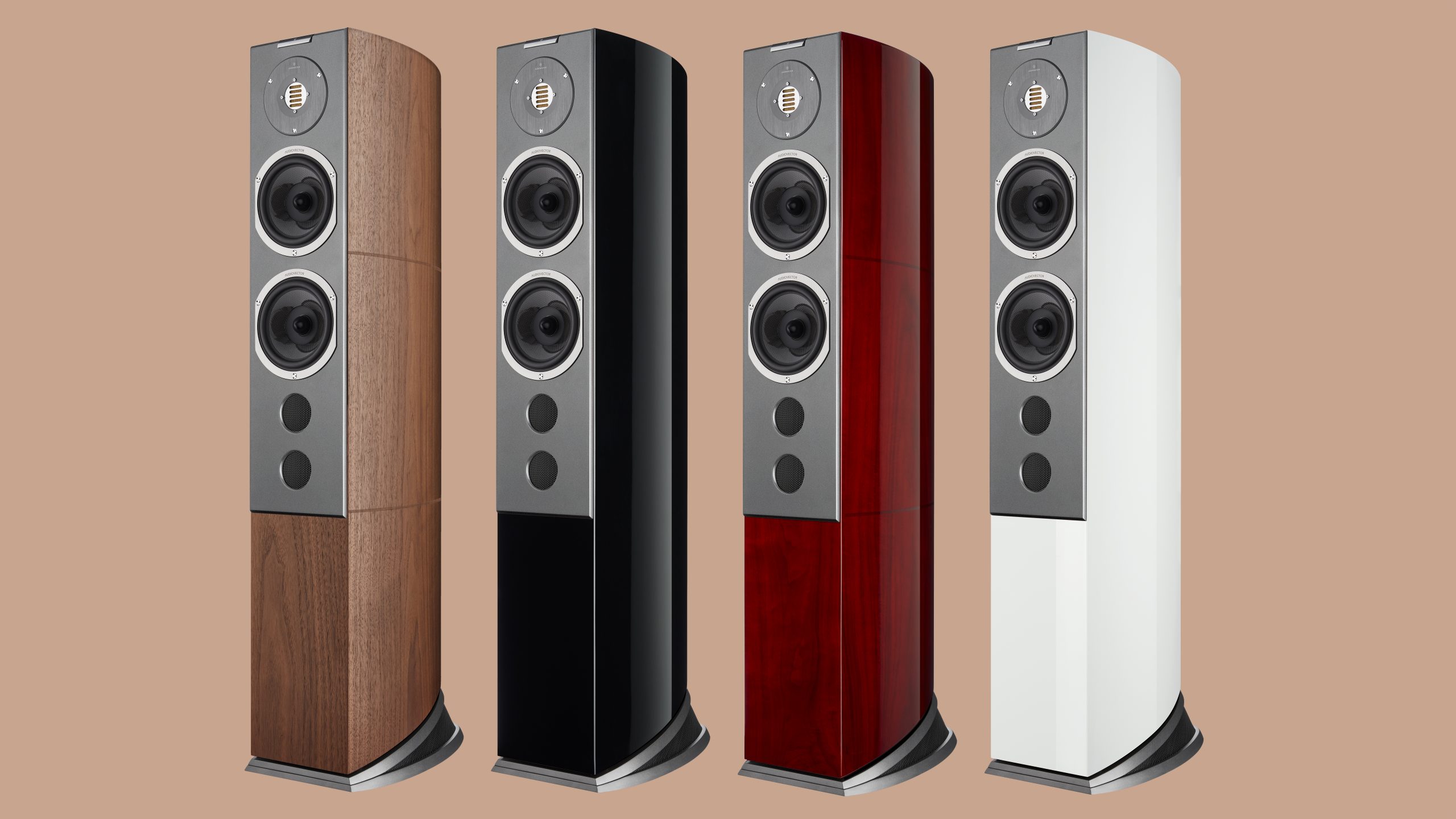
Fix the power
When we received the speakers for testing, the Norwegian importer had also sent a power filter of the type Isotek EVO3 Sigmas. We had already had some inexplicable, wonderful experiences with the affordable Corvus filter, which provides cleaner power to up to nine components.
Where all the contacts in the Corvus go through the same filter, each of the six contacts (2 x 16A and 4 x 10A) in Sigmas has its very own filter, which is also more expensive than in the Corvus.
This may sound like pixie dust and snake oil, but cleaner power actually gives cleaner sound. The audible differences with all the electronics connected through the filter are a bit like with the Freedom cables; namely that the entire tone register gets a better phase response, and thus a significantly better stereo perspective. Where voices in the middle are even better centered, and the soundscape in general more three-dimensional and holographic. And with speakers like the R6 Arreté, it all becomes even more obvious, than with most others.
The voices of Nathaniel Rateliff and Willie Nelson in the country song It’s Not Supposed to be That Way are differentiated from each other even more clearly than before, where Nathaniel sings from the belly while Willie is more nasal. The details of the overtones are clearer, the harmonica clearer, everything is better.
The piano in Beethoven’s piano concerto no. 4 also has several timbres, and the orchestra is less diffuse. The midtones on the back of the speakers really come into their own, drawing a large and holographic sound image. Everything is better, and it testifies that everything is in the signal path – including the power supplies. And it is so marked, that one does not want to return to unfiltered power afterwards. Few speakers demonstrates the differences in the electronic part of the signal path as convincingly as here. But the R6 Arreté is really a pair of unique high-end speakers.
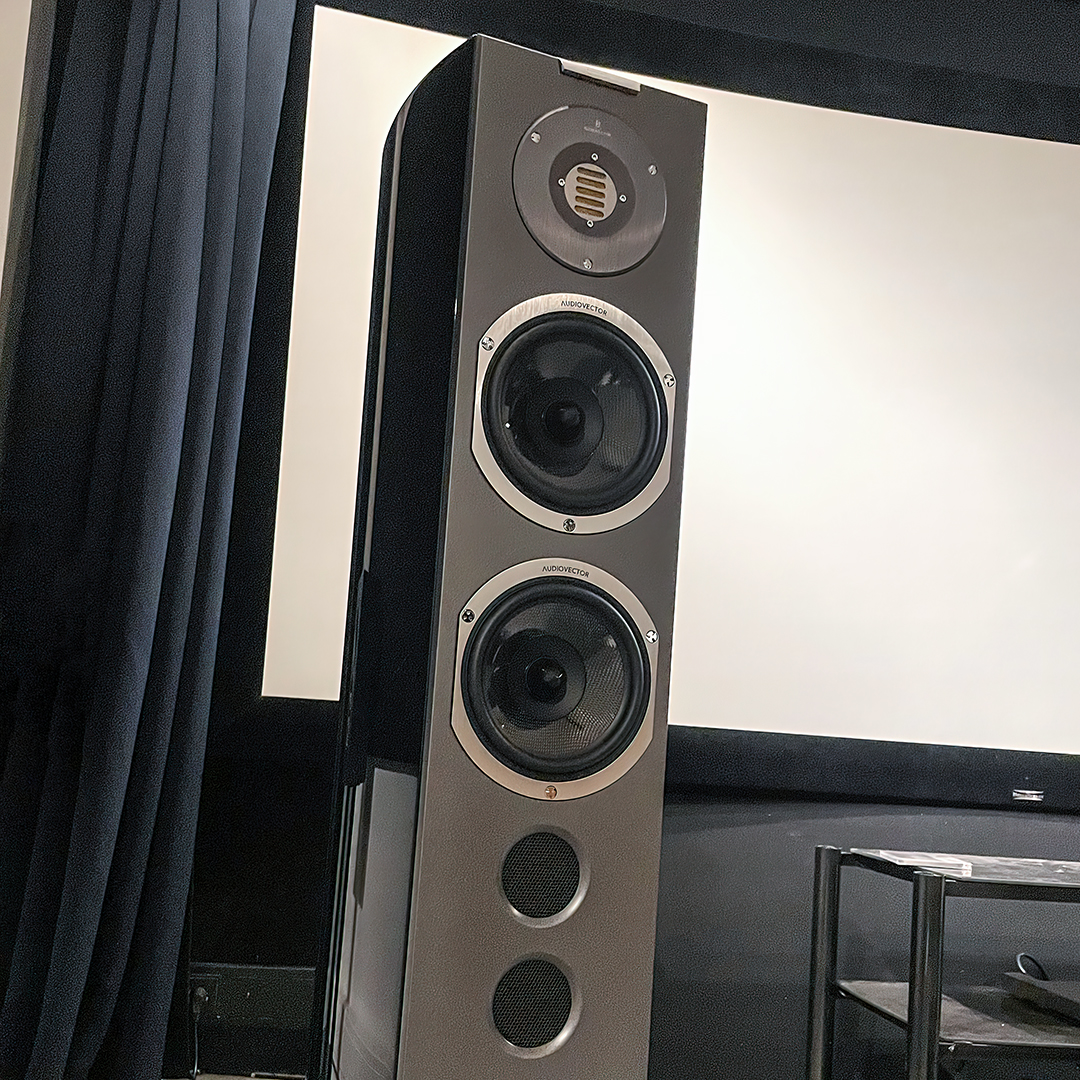
Easy to drive
Something that is extra cool, and that makes the high price tag a notch easier to swallow than it could have been, is that the speakers do not require a first-class high-end amplifier to sound brilliant. The high sensitivity means that they do not require much power, and the speed and the exquisite balance come out even with a tingly Sonos Amp, to put it a bit on edge. This is in stark contrast to, for example, Dynaudio Confidence 60, which swallows power in the most voracious way, and which we did not get to play properly until we went on with an amplifier for over £20,000 (Soulution 330). And still we could have wished for even more expensive cases. The amplifier hunt is much easier with the R6 Arreté.
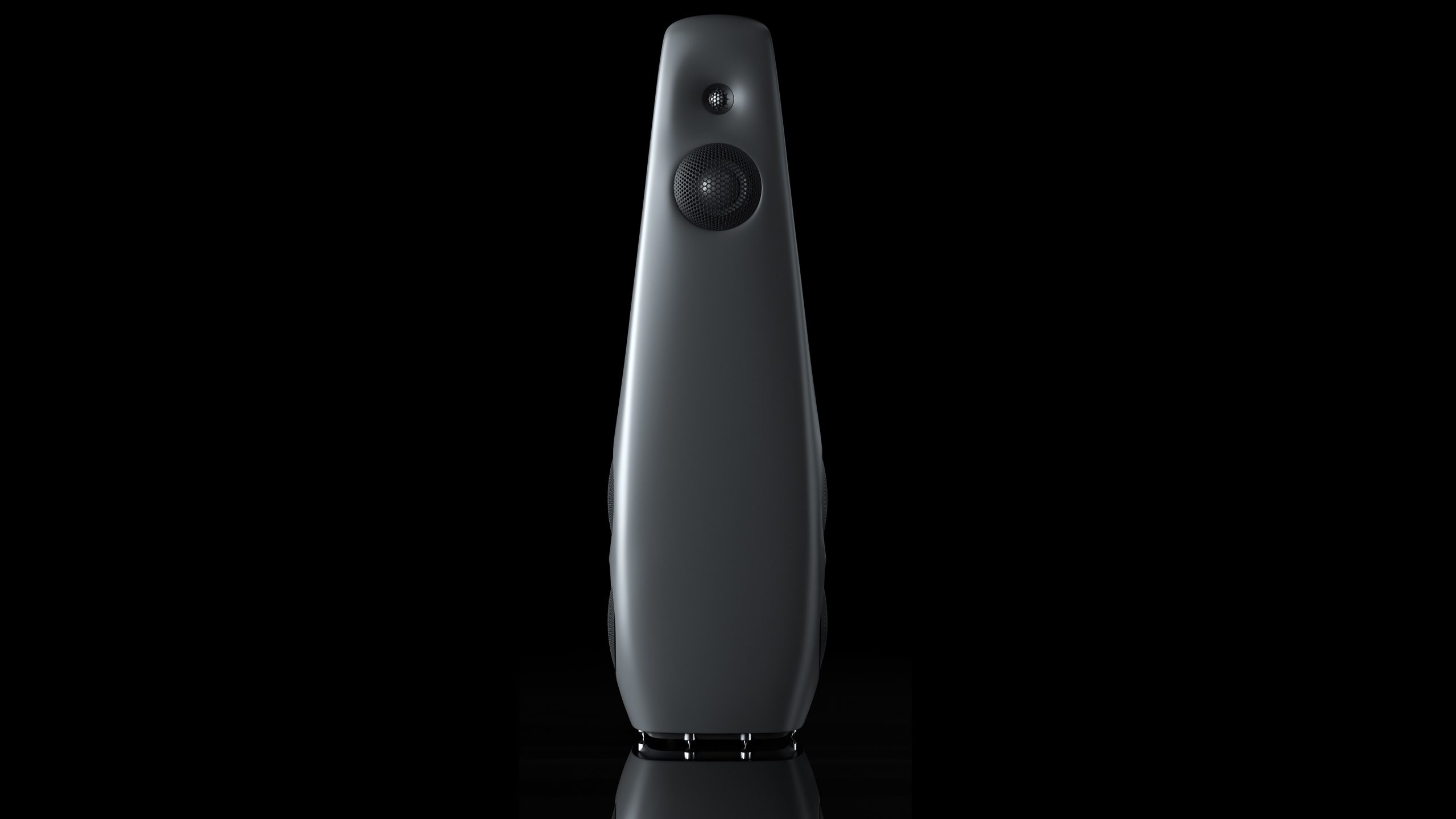
Competitors
If you are furtunate enough to have the finances for a pair of speakers in this price range, then the R6 Arreté is not the only speakers to consider. A speaker who stands out as a self-described candidate is KEF Blade Two. A fantastic, immediate and direct speaker that threatens to tear down your walls, while having a laser focus on the music. At a lower price, and one can argue higher quality impression, than R6 Arreté. Then you have the special, high-tech Vivid Audio Kaya 90, which also costs slightly less than the Audiovectors. With tapered tubes that absorb energy from the back of the elements, and serve the music as naturally and undistorted as possible. The Kaya 90 is also fairly easy to drive, and deserves a listen before choosing the Audiovector.
The list is long, but what is certain is that the R6 Arreté can stand to be in company and be measured against any of them. And they are among the easiest to make sound heavenly.
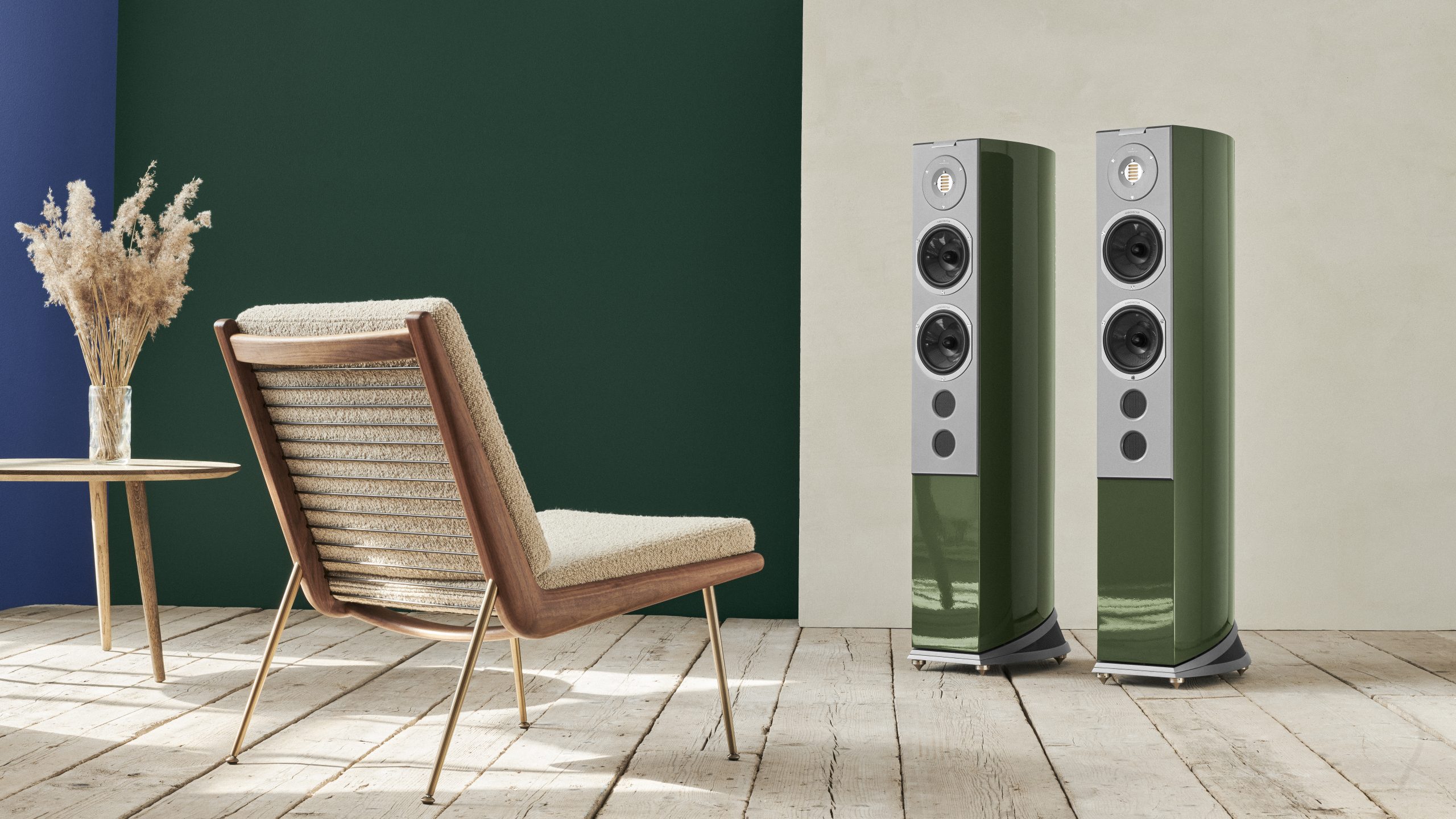
Conclusion
With the R6 Arreté, Audiovector takes a good step further from its predecessor SR6 Avantgarde Arreté V2.0 from 2016. It was also fabulous, but the height of the speakers with the ditto fairly high-pitched treble is a minor problem with the R6 Arreté. It obviously has a better vertical dispersion, so you can sit comfortably on the sofa without feeling that the sound goes over your head.
The bass is also better balanced with the R6 Arreté, with clearer sound structures, and the music simply comes out with more magic.
It’s really fun when you hit the spot in the ultra high-end class, not least when the speakers are so easy to operate at the same time. And relatively easy to place. This makes it fun to work with hi-fi, when you can dream away in the music instead of controlling with the headache around choosing the right components and working so much with placement that you wear out the floor. Even if you will be rewarded handsomely if you do too!

We think
Giant sound image, with lots of air and energy. The bass is in a class of its own, so sit back and enjoy! We simply have no objections at all!
25000 €
Specifications
- Type: 4.5-way bass reflex
- Frequency range: 35-36,000 Hz (-3 dB)
- Sensitivity: 91.5 dB / 8 ohms
- Tweeter: R AMT Arreté
- Midwoofer: 6.5″ carbon
- Midrange (rear): 3″ paper
- Woofer: 8 x 6.5″ isobaric
- Dimensions: 123.4 x 27.8 x 43.1 (H x W x D)
- Colors: White piano, Italian walnut, African rosewood piano, black piano
- Web: Audiovector.com
